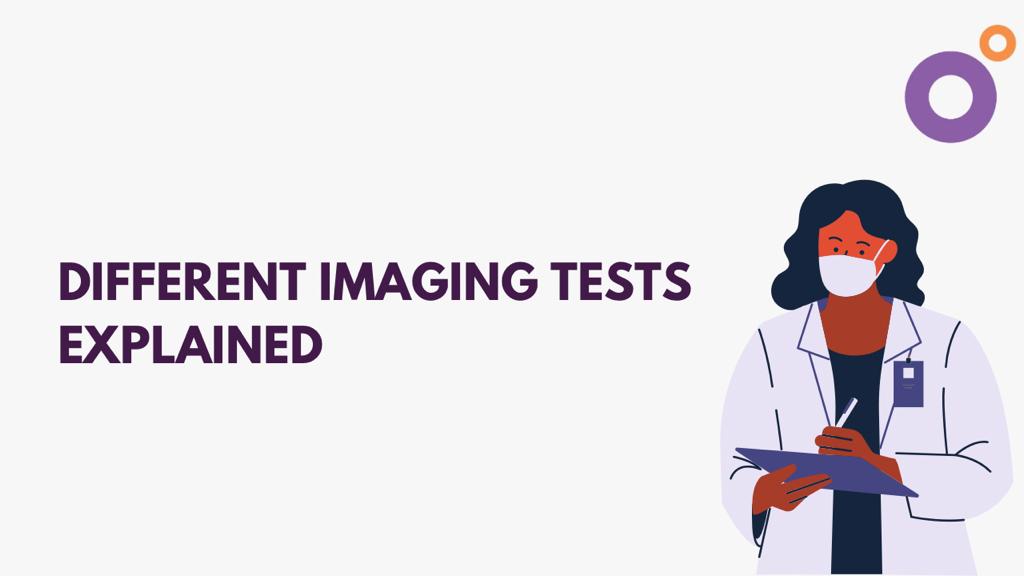
Different Imaging Tests Explained
Medically reviewed by

Dr.Akhil Bansal
Professor & Senior Surgeon - Orthopedics
Diagnostic imaging is non-invasive examination to look at internal organs and joints without conducting surgery to confirm the presence of disease or determine the severity of an injury to plan for surgical procedures. In this blog some of the most common diagnostic imaging tests and techniques have been highlighted.
X-rays
The most common diagnostic test is X-ray which is quick, painless exam performed to diagnose the cause of pain, determine bone fracture, digestive tract problems, also to check the progression of disease or evaluate effectiveness of the treatment. This involves focusing a small amount of radiation on the body where images are required. The technician ensures that the patient is not wearing jewellery or tight-fitting clothes which can impair the image quality. The total procedure involves only 10-15 minutes.
CT scan
Also called CAT scan or computed axial tomography scan, CT uses a series of x-rays to create cross-sectional images of bones, blood vessels and soft tissues which are more detailed than a conventional X-ray to study tumours and cancers, vascular disease, heart disease or guide biopsies. The CAT scanner looks like a large doughnut, in which the patient is slided for scanning. For certain tests, the patient may be asked to drink an oral contrast dye or receive an injection of contrast dye; to show what’s happening inside the body.
MRI
MRI or magnetic resonance imaging is another option for cross-sectional imaging of soft tissues such as organs and tendons using radio waves with magnetic fields. These are often considered safer, but the procedure takes longer up to half an hour or longer to examine brain disease, Multiple Sclerosis (MS), stroke, spinal cord disorders, tumours, blood vessel issues and joint or tendon injuries. Patients lie on a table which slides into MRI machine, which is deeper and narrower compared to CT scanner due to which some patients can feel claustrophobic. MRIs can be noisy, so earplugs or earmuffs are used.
Mammogram
Mammograms screen for breast cancer as early detection of cancer is essential for survival. Mammograms are of two varieties - offering screening and diagnostic examination. First screening mammograms are used to detect abnormalities. This involves a couple images of each breast. Next, diagnostic mammograms check for malignancy when a lump or breast thickening has been detected. Diagnostic examinations are more extensive, with more images taken from multiple angles so that these magnified images can be examined for suspicious areas.
Ultrasound
Ultrasound uses high-frequency sound waves to produce images of soft tissues, organs and vessels. This is the chosen way to examine pregnant women as there is no use of radiation. For examination of the abdomen, patients must drink lots of water and lie down on an examination table after which a gel is applied to the skin. A small probe or transducer is pressed against the skin to capture images using high-frequency sound waves. The procedure takes 15 – 25 minutes and used to diagnose gallbladder disease, breast lumps, genital/prostate issues, hernia and monitor pregnancy.
PET scans
A PET scan or positron emission tomography scan uses radioactive drugs (called tracers) and a scanning machine or PET scanner to detect disease detection at the cellular level. The tracers uncover problems that otherwise would have gone undetected likes cancer etc. Tracers can be introduced by injection in a vein, gas inhalation or drinking a special mixture. It takes an hour for the tracer to travel within the body. When it’s time, the patient lies on a table which moves through an O-shaped machine for detection.
FirstCure Health chain of hospitals offers advance facilities and imaging tests for the convenience of patients.
Why talk to Us?
We at FirstCure have top doctors equipped with most advanced procedures at guranteed lowest cost. We will assist you at every step from booking consultations, second opinions, arranging diagnostic tests, insurance approvals and related paperwork, admission to discharge and post surgery follow up consultation.